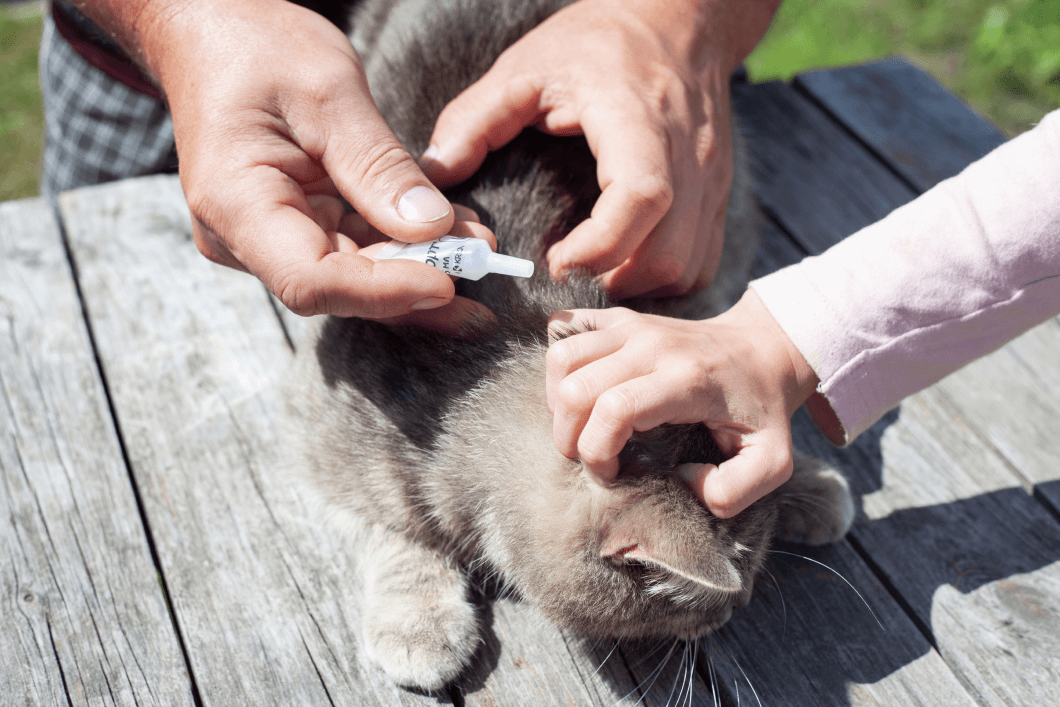Pet Health
How to Prevent Fleas and Ticks in Your Pets: A Complete Guide
Who among us has not experienced fleas or ticks on the pet? No one would like it – for the pet or the owner. Fleas and ticks are not mere nuisances causing itchy skin and irritated hair follicles, but are disease vectors, especially for pets. These pinhead-sized creatures can create much irritation and even threaten the life of your pets as they can cause skin rashes, allergic reactions, and many more illnesses. The good news, though, is that preventing fleas and ticks doesn’t have to be difficult. It is possible to ensure that your pets are not infested by pests throughout the year provided you do the following.
In this advisory, we’ll provide you a guide to breaking their cycle and keeping your pets protected against fleas and ticks: how they work, and how to prevent them.
1. Know Your Enemy: Understanding Fleas and Ticks
To approach prevention, it’s crucial to describe what fleas and ticks are and their impact on your pets.
Fleas: Tiny, but Persistent
Fleas are small, wingless insects that are primary bloodsuckers of animals (and sometimes humans). Once they locate a host, they proceed to settle into its environment, laying eggs that eventually hatch into more fleas. Fleas can leap up to seven inches in height, making it easy for them to move from the environment to your pet.
Fleas reproduce quickly. A single flea can lay up to 50 eggs in a day! These eggs fall off your pet and into your home, where they hatch, continuing the cycle. If you spot a few fleas, it’s likely there are more, and a small problem can become a big issue in no time.
Ticks: Stealthy Bloodsuckers
Ticks are arachnids (like spiders) that attach themselves to animals to feed on their blood. Unlike fleas, ticks don’t jump but latch onto your pet from grass, bushes, or other surfaces. Ticks can carry diseases like Lyme disease, which can affect both pets and humans.
Now that we know what we’re dealing with, let’s discuss how to prevent our pets from becoming victims of these pests.
2. Use Preventive Medications
One of the most effective ways to avoid fleas and ticks is by using preventive medications. These treatments are easy to use and provide long-lasting protection against these pests.
Topical Treatments
Topical flea and tick preventives are liquid treatments that are applied directly to your pet’s skin, typically between the shoulder blades. They kill fleas and ticks on contact and usually provide protection for a month. Popular brands include Frontline, Advantage, and Revolution.
Topicals are great for pets that don’t like taking pills and are easy to apply. Just be sure to follow the instructions carefully and choose a product that’s suitable for your pet’s size and age.
Oral Medications
If your pet doesn’t like topicals, oral medications are another great option. These come in the form of chewable tablets or pills and work by killing fleas and ticks from the inside out. Some oral meds provide protection for up to three months, so there’s less hassle with frequent applications.
Popular oral brands include Bravecto, NexGard, and Simparica. Be sure to consult your vet before starting any new medication and choose the right dosage for your pet’s weight.
Flea Collars
Flea collars are another option for long-term protection, particularly for outdoor pets. These collars release chemicals that repel and kill fleas and ticks, offering protection for several months. The Seresto collar is a popular option and is water-resistant, suitable for both dogs and cats.
Flea collars are convenient, but may not be as effective for severe infestations. They’re best used as part of a broader flea and tick prevention strategy.
3. Maintain a Clean Environment
Fleas and ticks don’t just live on your pets—they can also thrive in your home and yard. Keeping your environment clean is an important part of preventing infestations.
Clean Your Home Regularly
Vacuuming your home regularly is a great way to prevent fleas from taking hold. Pay special attention to areas where your pet spends time, like carpets, rugs, and furniture. Vacuuming removes flea eggs, larvae, and pupae before they become adult fleas. After vacuuming, dispose of the vacuum bag or empty the canister to prevent fleas from escaping.
Wash your pet’s bedding, blankets, and toys in hot water frequently. Fleas love to lay eggs in soft fabrics, so keeping these items clean is key to breaking the flea life cycle.
Yard Maintenance
Ticks love to hide in tall grass, bushes, and wooded areas, so keeping your yard tidy can help reduce the risk of tick exposure. Mow your lawn regularly, trim bushes, and remove leaf piles or debris where ticks might hide. If your yard backs onto a wooded area, consider creating a barrier, such as a gravel path, to keep ticks out.
There are also pet-safe yard treatments that can help control fleas and ticks in your outdoor space. These treatments can be sprayed around the perimeter of your yard or on grassy areas where your pet likes to play.
4. Perform Regular Checks on Your Pet
Even if you’re using preventive treatments, it’s important to regularly check your pet for fleas and ticks—especially if they spend time outdoors. Fleas are tiny and fast, so they can be hard to spot, but look for signs like excessive scratching, red irritated skin, or small black specks (flea dirt).
For ticks, check your pet’s ears, under their collar, between their toes, and in their groin area—ticks like to hide in these spots. If you find a tick, remove it carefully with tweezers or a tick removal tool, making sure to grab it close to the skin to avoid leaving the head behind.
5. Keep Your Pet Groomed
Regular grooming is another key aspect of flea and tick prevention. Bathing your pet with a gentle flea shampoo can help kill any fleas or ticks on them. Brushing your pet’s coat regularly can also help you spot fleas and ticks early before they become a bigger problem.
For long-haired pets, it’s especially important to keep their fur trimmed to reduce hiding spots for fleas and ticks. If you’re not comfortable grooming your pet yourself, consider taking them to a professional groomer.
6. Talk to Your Vet
Finally, always talk to your vet about the best flea and tick prevention options for your pet. Your vet can help you choose the right treatment based on your pet’s age, weight, health status, and lifestyle.
If your pet has had flea allergies or a tick-borne illness in the past, your vet can recommend a tailored prevention plan. And if you’re ever unsure about how to use a flea or tick product, your vet can provide guidance to keep your pet safe and protected.
Wrapping It Up
Preventing fleas and ticks in your pets is all about staying proactive. With the right preventive treatments, regular grooming, and a clean environment, you can keep these pesky parasites at bay and ensure your pet stays happy and healthy.
Every pet is different, so find a prevention plan that works best for your furry friend. By following the tips in this guide and working with your vet, you’ll be well on your way to keeping your pet flea- and tick-free all year round!

